Expert's Rating
Pros
- Excellent audio through the bass, mid and high tones
- THX Spatial Audio is a treat in games
- Lightweight and comfortable design
Cons
- No boom mic means the mic audio suffers somewhat
- ANC works but could be better
Our Verdict
The Razer Barracuda Pro gaming headset sounds terrific and delivers a spatial audio experience second to none. And, thanks to dual wireless and wired connectivity, you can use it with just about all your devices. The headset lacks a dedicated boom mic, but the upside is the Barracuda Pro passes as a pair of premium headphones when you’re not gaming.
Best Prices Today: Razer Barracuda Pro
The Razer Barracuda Pro delivers great audio in a modest, lightweight and comfortable design. It backs all this up with solid connectivity options, including 2.4GHz Wi-Fi, Bluetooth, USB-A and USB-C (wired), allowing you to connect to almost all your devices in an instant.
Gamers will love the Barracuda Pro’s THX Spatial Audio support, which elevates gaming audio to a rich and satisfying surround-sound experience. And, while the absence of a boom mic doesn’t do wonders for voice chats and recordings, it does mean the Barracuda Pro can pass for a convincing premium headphone set—a nice silver lining that adds to the device’s overwhelming appeal.
Note: See our roundup of the best wireless gaming headsets to learn about competing products, what to look for in a wireless gaming headset, and buying recommendations.
Barracuda Pro design and build
Like its predecessor, the Razer Barracuda X, the Barracuda Pro’s overall aesthetic is modest, consisting of rounded black cups and a plastic headband. There’s a noticeable absence of RGB lighting like you see in Razer’s Kraken line-up, or in rivals like the flashy Logitech G733. Instead, two shiny black Razer snake logos appear on the outside of each ear-cup, and the word “Razer” sits atop the headset’s band at the highest point.
The controls are stealthily finished in black, except for the mute mic button, which shows up green when in the off position. The modest design and hidden detailing means the Barracuda Pro scrubs up remarkably well as a traditional high-end headphone set when you’re not gaming.
The Barracuda Pro delivers a bevy of features that keep your ears and head snug and comfortable. The most obvious is its lightweight body, which eschews metal for plastic, reducing total weight. This might invite durability concerns for some gamers, but on the upside it virtually eliminates any horizontal and vertical pressure.
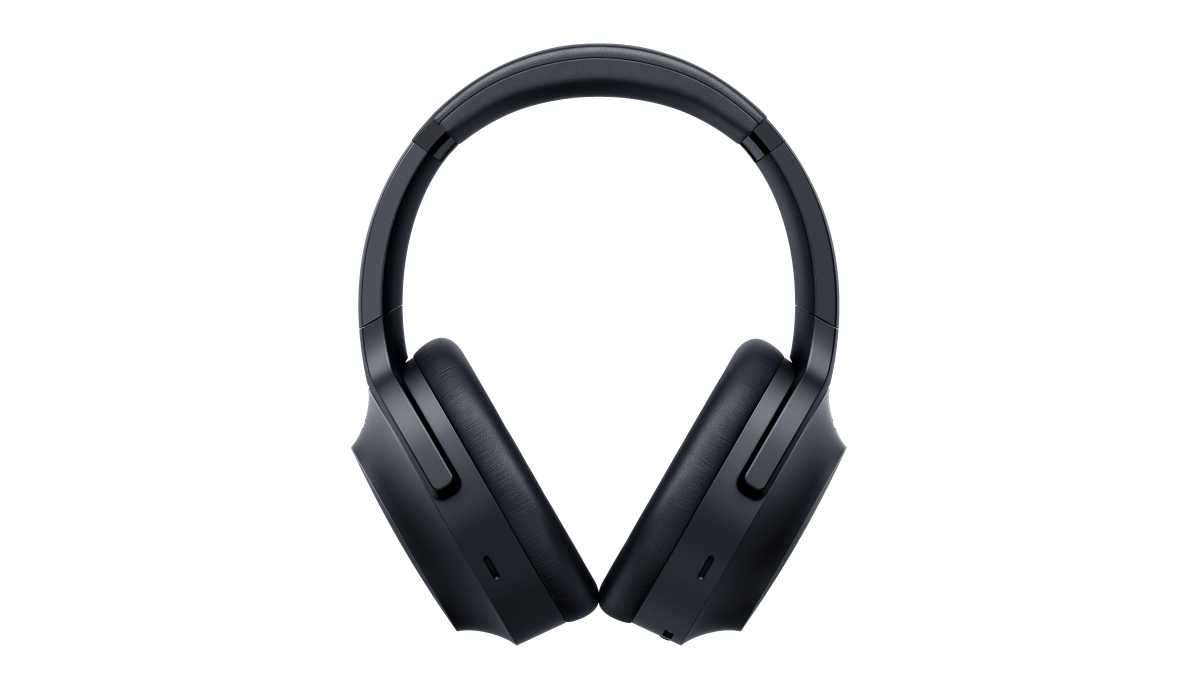
Dominic Bayley
The earpads are similarly designed for feel-good comfort. They’re both very soft and covered in a tactile fake leatherette material that’s neither too coarse nor too slippery against your ears. The foam underneath is especially gentle and squishes down effortlessly, allowing the cups to all but melt into the sides of your head, thereby diminishing any discomfort to your ears.
Razer’s biggest change relative to the Barracuda X design is the absence of a protruding microphone on the Pro model. In its place are two innocuous slots that sit on the bottom front edges of the cups. Apart from this big change, the rest of the Barracuda Pro’s controls are similar to what you’d find in any other premium gaming headset. Below the mute button on the left ear-cup you’ll find a volume wheel and power button as well as a power port for charging.
The Barracuda Pro comes with a large hardtop carrying case with well-defined headphone grooves. This does a decent job in stopping the phones from bumping around inside your satchel or backpack.
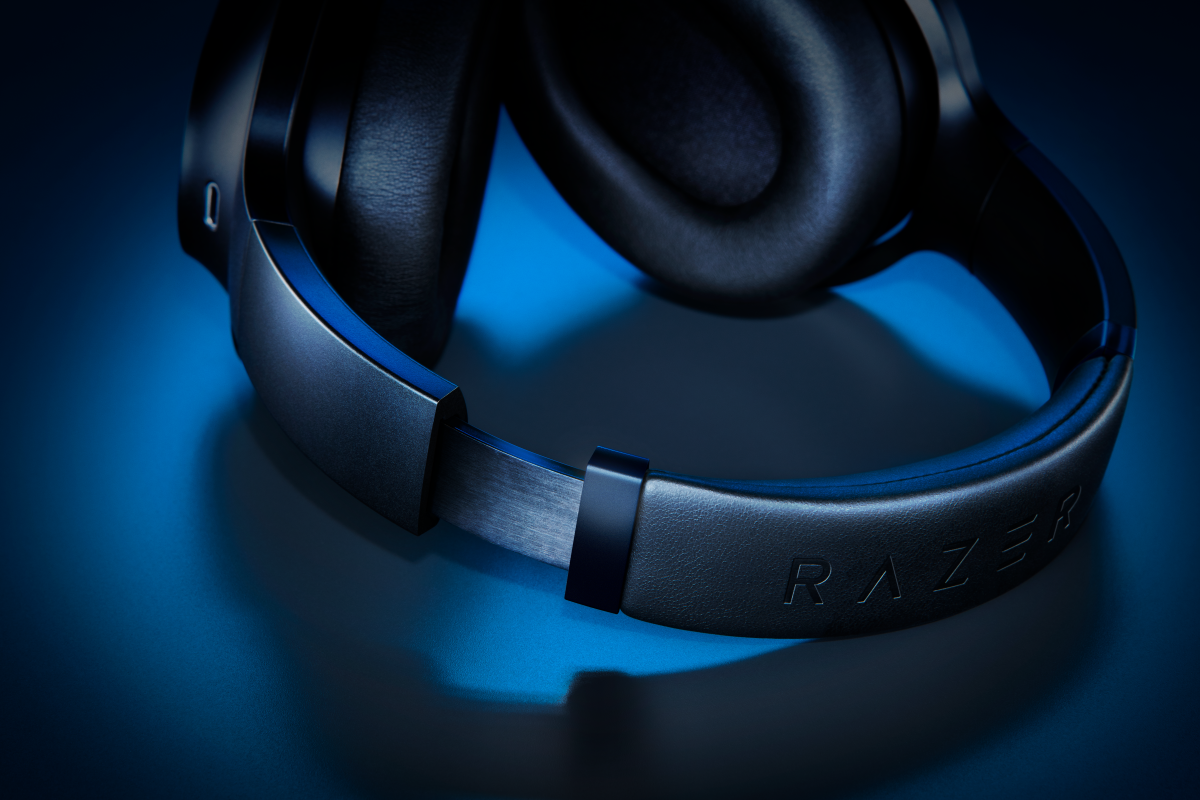
Razer
In the center of the case is a pouch with a magnetic clasp that houses all the supporting paraphernalia: the USB-C-to-USB-A charging cable and USB-A-to-USB-C extender. A miniscule second pouch inside the bigger one holds the Barracuda Pro’s USB-C dongle—a nice touch that makes losing it a little more difficult.
Barracuda Pro connectivity options
Regrettably, the Barracuda Pro lacks a 3.5mm jack for wired connectivity. This denies it the versatility of the Barracuda X or rivals like the SteelSeries Arctis Nova Pro Wireless. Still, these headphones do offer fast 2.4GHz Wi-Fi, as well as the latest Bluetooth 5.2 connectivity, and you can switch between these modes in an instant.
The headset is also compatible with just about all your devices, including your PC, Nintendo Switch, PlayStation consoles, and Android devices, saving you the hassle and cost of purchasing multiple headsets. Switching between my PC and Nintendo Switch was a cinch with the supplied USB-C-to USB-A adapter. I never had to go through the rigmarole of checking ports.
Setting up the Barracuda Pro on my PC in Wi-Fi Mode was also completely straightforward. Once you plug in the dongle, you just turn on the headset and your PC does the rest. Pairing via Bluetooth was similarly effortless, with the whole process taking less than just one minute.
Once connected, two taps of the button on the right ear-cup switched the device between the Razer Hyperspeed Wi-Fi and Bluetooth signal, and this change was announced by a helpful voice confirmation, so I was never left wondering.
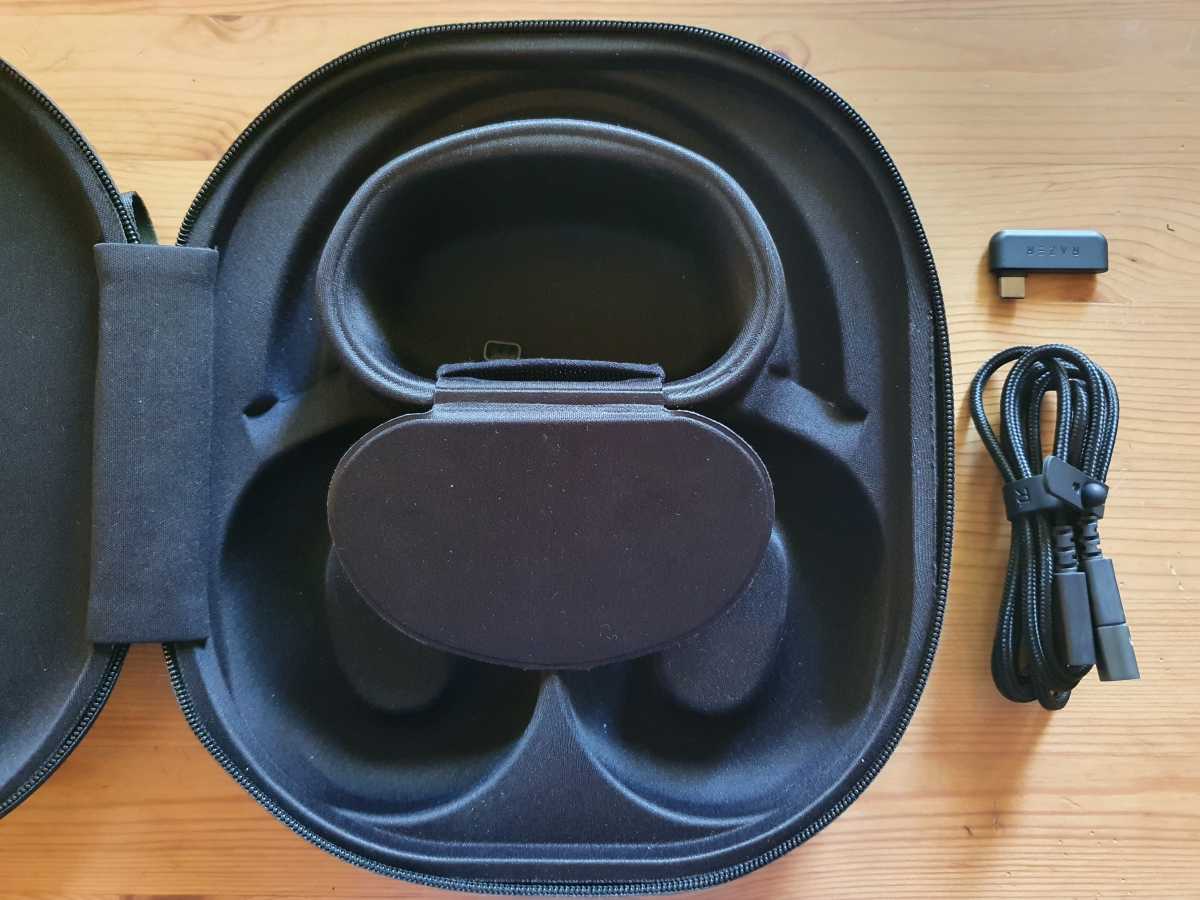
Razer Barracuda carry case with dongle and USB-C to USB-A adapter
Dominic Bayley
Razer’s Synapse software
The Barracuda Pro benefits from Razer’s well-polished and easy-to-navigate Synapse app that gives you nice control of your headset’s audio output via presets. You can also personalize EQ presets, spatial audio profiles, volume, and mic settings, and switch the Active Noise Cancellation on or off.
Serious gamers and audiophiles have four EQ presets to play with, each one optimized for various entertainment scenarios. There’s one for games, movies and music, plus a default that does a decent job in all categories. A fifth option lets you tweak up to 10 EQ bands to create custom profiles for specific games, tracks or movies.
No pro-grade headset is complete without audio enhancement settings, which Synapse also offers. Under the “Enhancement” sub-menu, you can boost the bass, tweak voice clarity, and normalize the audio by using convenient slider bars.
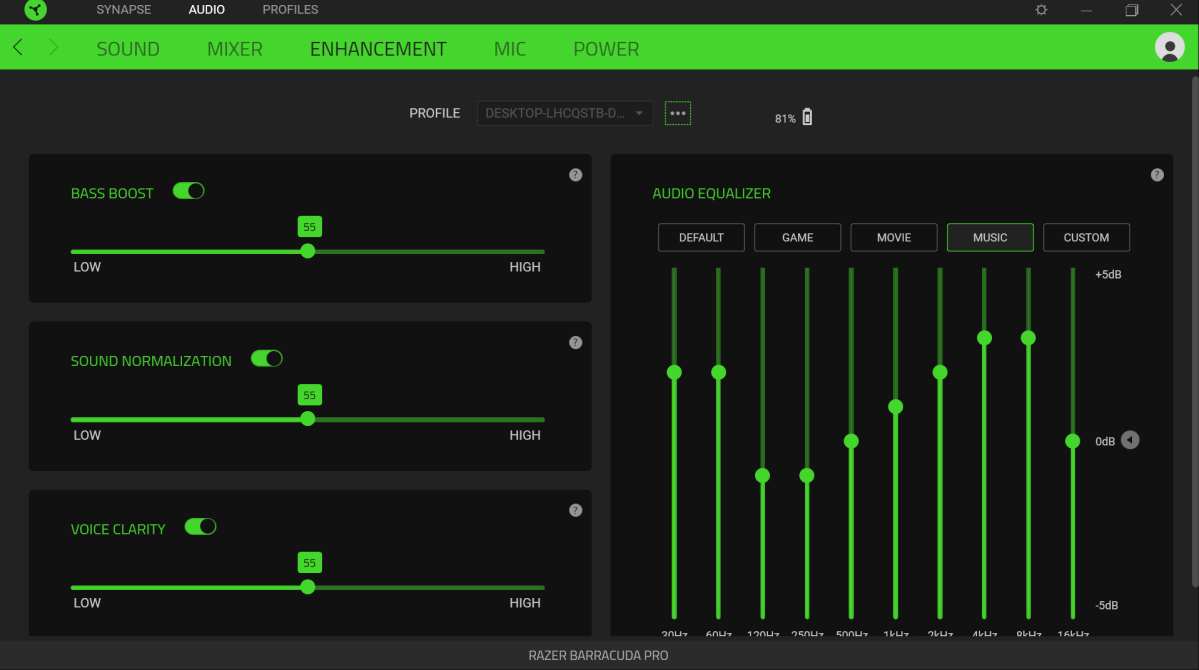
Dominic Bayley
The device’s surround sound comes courtesy of THX Spatial Audio. In Synapse you have two options: an Auto Mode enabling the app to select the best profile for your media, or a Manual Mode where you can personally assign your own profiles. The best thing about these profiles is they come visually represented as circular diagrams in which you move dots around to decide on the directionality of sound.
Razer’s Audio app for Android and iOS puts you in control of the same EQ presets as the Razer Synapse app, but adds a low-latency Gaming Mode and Do-not-disturb Mode that blocks calls so that you can keep playing no matter what. It’s also similarly straightforward to use.
Barracuda Pro audio performance
The Barracuda X’s 40mm drivers have been replaced by larger 50mm Triforce Bio-cellulose drivers, and they really pack a punch. Tones at frequencies below 400Hz sounded deep and commanding, especially in pitch transitions were the thump of a bass drum kicked in or the beat dropped especially low.
The headset also delivered impressive mids and highs. These tones were clear and defined, filling up my eardrums with a smooth timbre, especially in games with expressive vocals or guitar, such as Diablo II: Resurrected or Valheim.
Playing around with the generic media presets proved them to be nicely optimized for each media type. The Game EQ preset cranks up amplitudes in the 250Hz to 8Khz range so the mids and highs aren’t drowned out by heavy bass notes. The Music EQ preset delivers amplitude peaks for mids and highs as well as the bass, thereby delivering a richer sound.
Fans of first-person shooters will revel in the THX Spatial Audio Game Mode preset, which works exceptionally well, delivering strong directionality in FPS titles like Counter-Strike: Global Offensive and Battlefield I. This preset emphasizes sounds located in the front and sides of your player character, as indicated by dots in an accompanying graphic.
Feeling adventurous in my playtesting, I moved two of the dots to the bottom of the spatial diagram to see (well, to hear) what happened. Back in game with my new profile active, the directionality of the game sound coming from behind my player character was enhanced so that I could better hear footfalls and be more easily alerted when I was being outflanked.
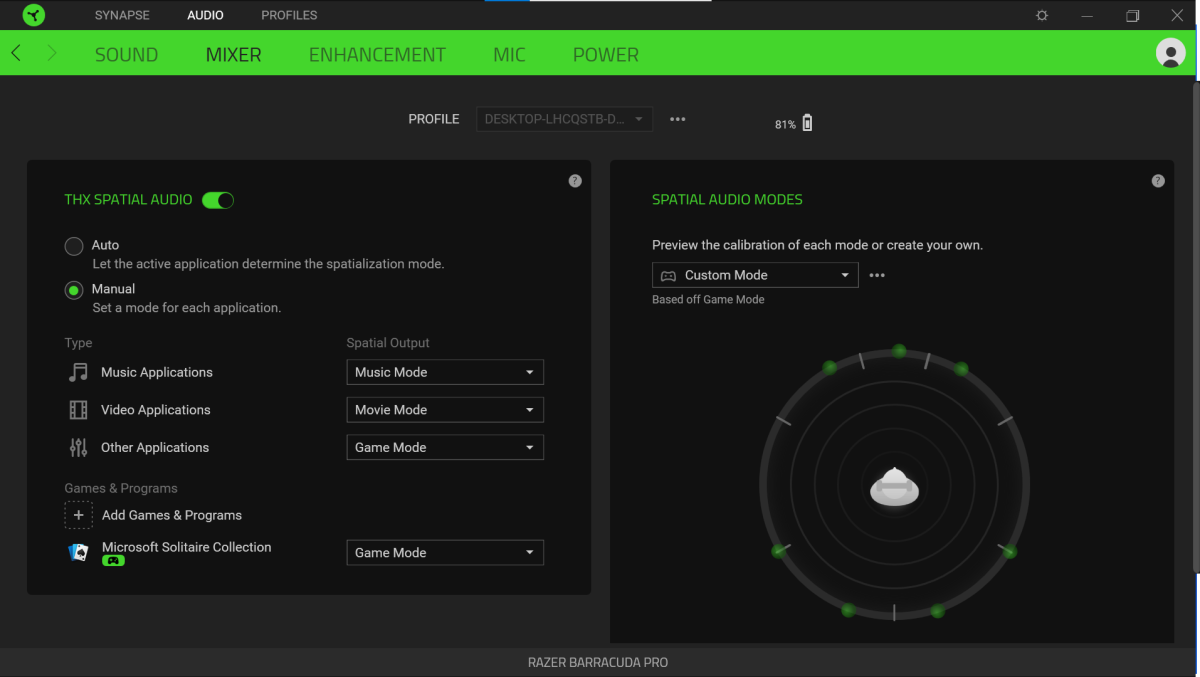
Dominic Bayley
All in all, THX Spatial Audio was incredible, but the Barracuda Pros’s noise-cancellation was somewhat less impressive. That’s not to say it doesn’t work—on the whole it does a reasonable job in keeping out distractions like traffic noise. Nonetheless, it struggled to prevent higher-pitched sounds like voices and birds’ chirps from leaking in.
Considering the Barracuda Pro’s $249.99 price point, its ANC isolation should have been better. Still, unless you’re actually testing for these sounds, it’s likely you won’t notice too much ambient room noise when the gaming gets frantic.
Barracuda Pro microphone performance
The Barracuda Pro makes a bold statement with two beamforming auditory slots instead of an over-the-mouth boom mic, which is a defining feature in most gaming headsets these days. From one point of view, this unusual design makes some sense in that it decreases visual distraction and makes for a compact, ergonomic unit to pack down.
However, the mics’ sound quality didn’t quite live up to expectations in recordings, sounding a little faint and a bit muffled. That’s not to say they won’t do a decent job on clarity. They’re just not as good as the Barracuda Pro’s predecessor, the Razer Barracuda X.
The bottom line
Razer’s $249.99 Barracuda Pro gaming headset sounds terrific in games and delivers a spatial audio experience second to none. It also comes with dual wireless and wired connectivity and a convenient USB adapter so you’re never left struggling to connect. However, the absence of a boom mic feels a bit odd in games and compromises the mics’ sound, and its ANC doesn’t quite have the stopping power of some rivals.

